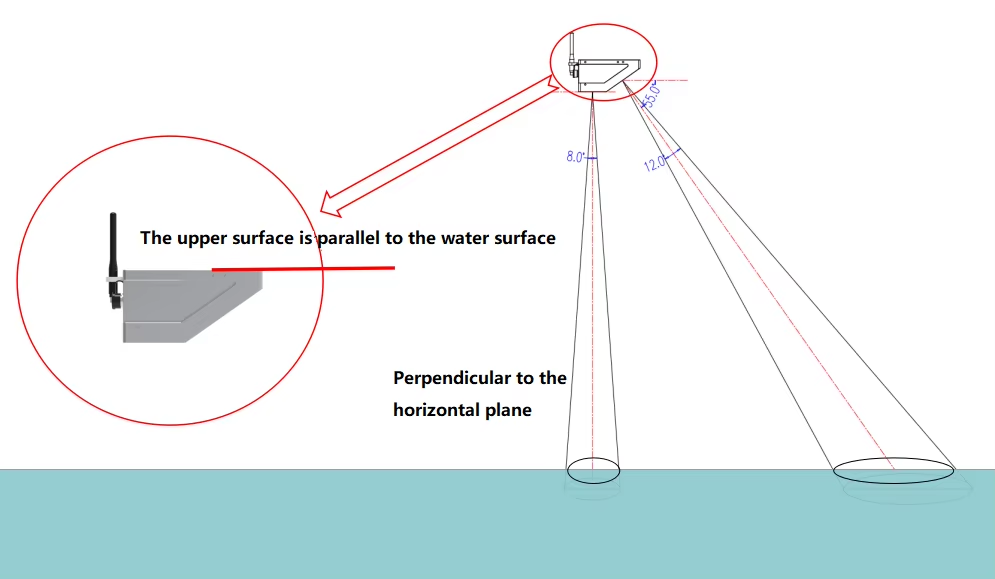The three-in-one hydrological radar sensor is a highly integrated intelligent monitoring device widely used in hydrological monitoring. Its technical features and applications play a crucial role in agricultural water resource management, flood prevention, and disaster mitigation. Below is a comprehensive analysis of its characteristics, applications, and impact on Philippine agriculture.
I. Features of the Three-in-One Hydrological Radar Sensor
- High Integration
The sensor integrates three key functions—water level, flow velocity, and discharge (or water quality) monitoring—using radar technology for non-contact measurement, avoiding issues like mechanical wear and flow interference found in traditional contact-based sensors. - Non-Contact Measurement
Using radar wave transmission and reception, the sensor can monitor water parameters in real time, making it suitable for complex water environments (e.g., rivers, canals) without being affected by water quality. - Real-Time Data & High Accuracy
The sensor continuously collects data and transmits it to remote monitoring centers via communication protocols like ModBus-RTU, enabling prompt decision-making. - Low Maintenance Costs
Since it operates without direct contact with water, the sensor is resistant to corrosion and sedimentation, ensuring a long lifespan and minimal maintenance. - Adaptability to Harsh Environments
Designed to work with hydrological monitoring poles, the sensor remains stable under extreme weather conditions, making it ideal for flood control and agricultural irrigation.
II. Key Applications
- Flood Prevention & Disaster Mitigation
Real-time monitoring of water level and flow velocity helps provide early flood warnings, reducing damage from water-related disasters. - Agricultural Water Management
Used in irrigation channels to monitor water flow, optimizing distribution and improving irrigation efficiency. - Environmental Protection
Monitors water quality parameters (e.g., turbidity, pH) to assess pollution levels and support conservation efforts. - Urban Drainage System Monitoring
Helps prevent urban flooding by optimizing drainage network operations.
III. Impact on Philippine Agriculture
As an agricultural country, the Philippines faces challenges in water management and extreme weather events (e.g., typhoons, floods). The three-in-one sensor can bring the following improvements:
- Precision Irrigation Management
Many regions in the Philippines rely on traditional irrigation methods with low efficiency. The sensor enables real-time monitoring of canal water levels and flow rates, optimizing irrigation scheduling to reduce waste and increase crop yields. - Flood Early Warning
During the rainy season, floods frequently damage crops. The sensor can detect abnormal water level rises in rivers, providing early warnings to farming communities and minimizing agricultural losses. - Support for Smart Agriculture
When integrated with IoT technology, sensor data can be fed into agricultural management platforms, enabling remote monitoring and automated control to enhance digital farming practices. - Climate Change Adaptation
Philippine agriculture is highly vulnerable to extreme weather. The sensor’s long-term hydrological data collection helps policymakers develop adaptive agricultural strategies.
IV. Challenges & Future Prospects
Despite its potential, the three-in-one sensor faces challenges in the Philippines:
- Cost Barriers: Small-scale farmers may struggle with initial investment costs.
- Data Integration: A unified data platform is needed to avoid information silos.
- Maintenance & Training: Local technicians require training to ensure long-term operational stability.
Looking ahead, advancements in IoT and AI could further enhance the sensor’s role in Philippine agriculture, promoting sustainable farming practices.
Conclusion
With its efficient and precise monitoring capabilities, the three-in-one hydrological radar sensor can provide critical technological support for Philippine agriculture, improving water resource optimization, disaster prevention, and the transition to smart farming.
Please contact Honde Technology Co., LTD.
Email: info@hondetech.com
Company website: www.hondetechco.com
Tel: +86-15210548582
Post time: Jun-16-2025


